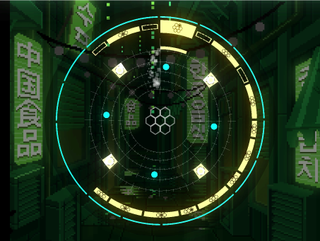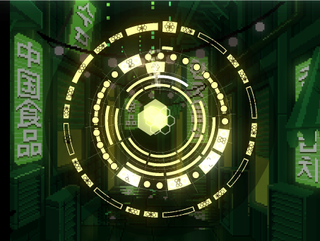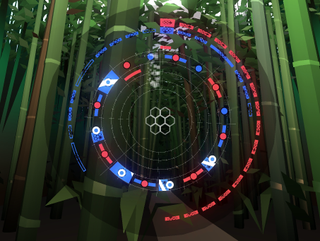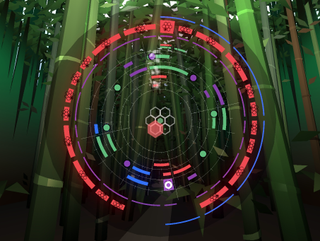Greetings Hearthstone fanatics and PC Gamer readers.
Vincent Sariushere, PC Gamer's resident Hearthstone decksmith. This week I've got something special for you: an interview with the winner of Dreamhack Bucharest, the largest Hearthstone tournament to date. Dreamhackis a huge PC festival, and well-known for hosting a wide range of LAN tournaments for major e-sports games, including League of Legends, Dota 2, Starcraft 2, and now Hearthstone.
Q: Firstly, congratulations on your victory at Dreamhack Bucharest. What did you make of the tournament overall?
A: Thank you very much! It was overall an unbelievably great experience and I never expected to win!
Q: What advice would you give PC Gamer readers who fancy playing Hearthstone in a tournament?
A: Just go for it and enjoy it! The best example is Geepsy, a player who was completely new to Hearthstone during the event, and now he is a living Hearthstone Legend! [Geepsy was a local Romanian Hearthstone player entirely unknown to the community, yet in his first ever showing managed to get to the Grand Finals of an incredibly talent-packed tournament using some unfashionable cards.]
Q: How nervous were you during the final few matches?
A: I was surprisingly calm during the finals. I was very confident in my skill and my decks.
Q: Did your decks perform as expected?
A: I can't speak for all of my decks, since I mainly used one throughout the tournament. I expected my Druid deckto win most of my first games in the Best-of-Threes, and then to get counter picked in the second match. I never expected to win 2-0 most of my Games!
Q: What lessons have you learned from Dreamhack that you will take into your next tournament?
A: To practise a lot one-two weeks before the tournament, and two days before the event to just relax and not worry too much about the games.
Q: Your Ramp Druid deck has quickly become popular, can you tell us a bit about the creation of that deck?
A: I collected quite some tournament experience with my Druid deck before I entered Dreamhack. For example I won the Zotac Cup with a slightly different Ramp Druid version and outstanding 19-1 stats. I optimized my deck throughout the months. Every single card was carefully chosen–it's no surprise that it became quite popular .
Q: As one of the designers of the very powerful Midrange Hunterdeck which became hugely popular during the latter half of the April season, can you explain what made the deck so much more dominant than previous Hunter decks?
A: It was much more consistent than the previous Hunter versions. We removed the biggest weakness of the existing Hunter decks–the traps. You can easily play around them, or completely ignore them, until you build up your own win condition. Besides that, you didn't rely completely on the Buzzard-Unleash the Hounds combination to win.
You had other "big threats", like Savannah Highmane for example. These forced your opponents, who usually played around the Buzzard/UTH, by simply not overextending the board with too many minions, to play multiple creatures and make themselves vulnerable to the combo.
Q: Relatedly, Blizzard recently increased the cost of Unleash the Hounds to 3 Mana. Did you think that was necessary?
A: I think it was necessary, since Hunter became too dominant on the Ladder. The broken part was the endless amount of card draw the combo enabled without any interaction from the enemy player. The same problem exists in the existing Miracle Rogue decks, and I believe that Blizzard is going to nerf that next .
Q: Do you expect Hunters to keep running the card, or will we now see some experimentation with non-UTH Hunter decks?
A: I believe that Hunter will be rarely played on the ladder. Before the UTH buff from 4 to 2 Mana, Hunter was a rarely picked class. The other existing class-specific Hunter cards are simply not as good as the cards other classes have, since Secrets are unplayable in the current metagame, and without Secrets the Eaglehorn Longbow is a very expensive version of Fiery War Axe.
Q: Speaking of experimentation, I tune into your stream from time to time and you certainly have some interesting decks. Can you tell us a bit about what you're working on currently?
A: Currently I'm working on a competitive Bloodlust-Shaman deck, and I want to make Priests more valuable in tournaments as well.
Q: What is your single favourite card in Hearthstone, and why? (And also which one do you hate having played against you the most?)
A: Elven Archer is my favourite card, because it looks pretty crappy at first sight, but you can also see it as a Mage hero ability and Paladin Hero ability combined for 1 Mana. It's a very versatile card and I use it in many of my decks. The card I hate the most to play against is definitely Gadgetzan Auctioneer, because it is completely out of my reach how useful that card will be to my opponent, it totally depends on his own draw.
Q: Blizzard has also been showcasing some of the cards that they will be releasing with the Curse of Naxxramas expansion. Are there any that you've seen so far which you expect to have a strong impact on the metagame?
A: As many others already mentioned, the Nerubian Egg will be really dominant in the first couple of weeks after the release. It will be mainly played in Zoo Decks.
Q: Hearthstone senior designer Ben Brodesaid during his appearance on ValueTown that, while they're not introducing any new Keywords with Naxxramas, they are introducing new mechanics. What mechanics would you like to see introduced?
A: Instead of a mechanic, I would like to see a weekly tournament for Arena, as an example. They could implement a system that saves the 12 win-streak Arena decks you've had, and allow you to use those Decks in a weekly tournament against other Arena decks. This would bring back the fun and replayability of Arena, even for pro gamers.
Q: What do you think is the single most interesting deck that's been designed so far?
A: Summoning Portal - Alarm-o-bot - Legendary only - Warlock Deck.
Q: Have you got any simple tips you could give readers who are struggling to climb the ladder?
A: Don't blame bad RNG or Blizzard, try focusing on your mistakes and work on avoiding them. You will eventually become a good player and climb the Ladder with ease.
Q: You just won King of the Hill, but what's next? More tournaments?
A: My next big goal is to help Tempo Storm win Dreamhack Summer!
Q: Finally, any shout-outs you'd like to make?
A: Shoutout to Skar, Reynad for helping me so much with everything, and to all my viewers, fans and of course to all PC Gamer readers!
You can watch Gaara over at Twitch, as well as follow him on Twitter. Team Tempo Storm can also be found on Facebookand Twitter.


















